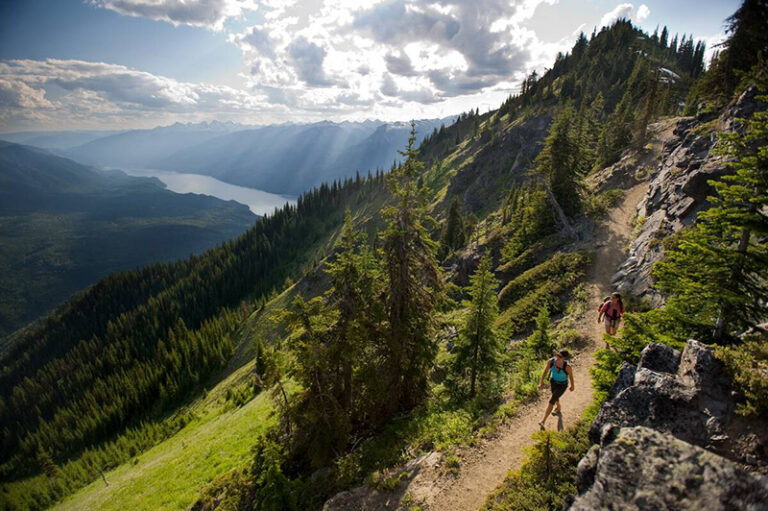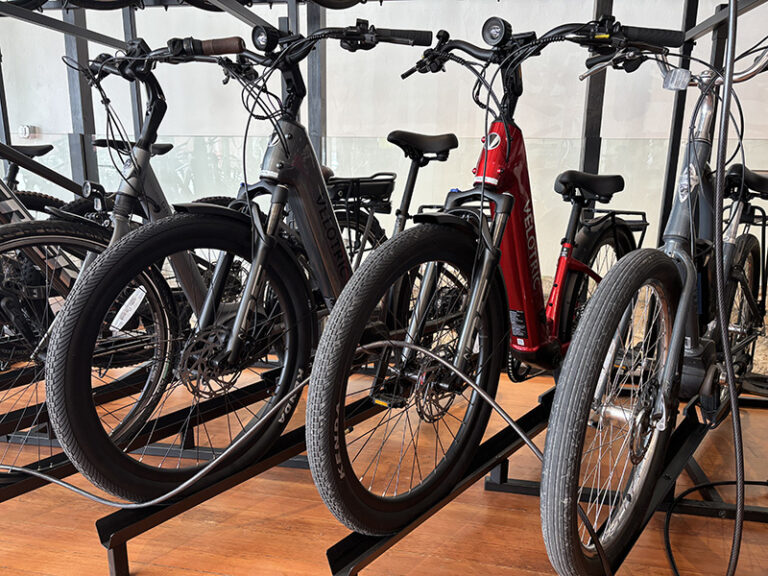Over the last few years, local chef and endurance cyclist David Blaine has hosted a loosely-organized midnight century bike ride. The ride leaves Brown’s Addition at midnight on a warm summer night. Until last year, the route was an all-paved route that took riders out to Liberty Lake and over the hills of the Palouse. Last year, for the first time, Blaine routed much of the century over dirt roads. While the Midnight Century was already an interesting ride, by changing the route to include rough dirt roads the ride became an instant classic. Last year, only three of 12 riders finished the ride.
It’s an epic ride that is really a lot of fun if you’re cycling with your friends. Riding over rough gravel roads with a group of friends under a dark sky is fun in the same way that sneaking out and night swimming was fun as a teenager.
For the record, David Blaine is not hosting the ride this year. In fact, no one is hosting the Midnight Century; the ride is officially hostless. From now on, the ride will just happen if cyclists show up and won’t if they don’t.
It will forever be the first Saturday night of August. That’s August 1st this year. The Midnight Century leaves the Elk at 11:59 PM. There is no support; there are no t-shirts; there are no road markings. Search for “Midnight Century Spokane” on mapmyride.com to find the 2008 route. That is the official route of the officially hostless Midnight Century.
The route goes to Liberty Lake and over the hills of the Palouse to Spangle. From Spangle, the route follows dirt roads nearly into Cheney, where it heads off towards Spokane. The ride ends in Brown’s Addition. Last year the finishers enjoyed a lovely breakfast at Café Marron.
If you are interested in giving the ride a try, here are some things to consider.
1. BE IN REASONABLE SHAPE. This is not a good ride to attempt for a first century ride. There’s a lot of climbing. Much of it is on dirt roads. Generally speaking, if you can ride a 50-mile hilly dirt ride with little recovery, then you should be able to finish the route.
2. RIDE WITH A PARTNER. You will be out in the middle of rural roads in the wee hours of the morning in the dark. Some of the route does not have cell phone access. You and your buddy should be about the same fitness level, or one of you should be willing to go slower.
3. BRING A GPS. You or your partner should have a GPS with the route loaded on it. Bring a back-up map too. The route will take you on roads that you’ve not been on before. There’s at least one “this can’t be right” turn that puts you on a mostly-closed summer road. If you have time to pre-ride the route between Sands Road and Spangle, you should.
4. RIDE THE RIGHT BIKE. The most important component for this ride is the tires. Volume is more important than tread; think high-volume and low pressure. For skilled and fit riders, a road bike with 28 mm tires could work. But for most riders, a cyclocross bike or other fat-tired (35 mm or fatter) road bike with a triple chain ring is probably best. A rigid mountain bike might work for some.
5. PACK A REASONABLE TOOL KIT. Bring a spare tube and patches. Pack a spoke wrench, a FiberFix spoke, and a multi-tool. If you are running supple tires, which would be ideal for this ride, you might consider bringing a spare tire.
6. LIGHTS ARE IMPORTANT. The majority of the ride is rural so it’s really dark. Your light needs to illuminate the entire road ahead of you and it needs to last 7 hours. In addition to a good bike light, have a flashlight or a helmet-mounted secondary light for fiddling with stuff in the dark. You will need to dig through your bag for food. You may need to change a flat. And be sure you have at least one good rear, red blinky with fresh batteries.
7. HAUL YOUR WATER. There is no easy water on the route until you get to about mile 75 at Spangle. Think about how much water you need in 100 miles of vigorous riding. You’ll probably need all the water bottles that your bike will carry, plus a hydration pack.
8. HAUL YOUR CALORIES. Again, there are no services until Spangle. It’s important to realize that Spangle services (one gas station and one restaurant) open at 6 AM. However, for the purposes of food and water planning, you should assume that Spangle services will be closed. In any case, you need to bring food to get you through the ride.
9. RECOGNIZE THAT THIS IS NOT A SUPPORTED RIDE. You are doing this because it’s fun and a great challenge. But you should only attempt the ride if you are willing to assume the inherent risks of riding 100 miles over rural dirt roads in the middle of the night. Do not do this ride if you are not prepared.
John Speare grew up and lives in Spokane. He rides his bike everywhere. Check out his blog athttp://cyclingspokane.blogspot.com.













